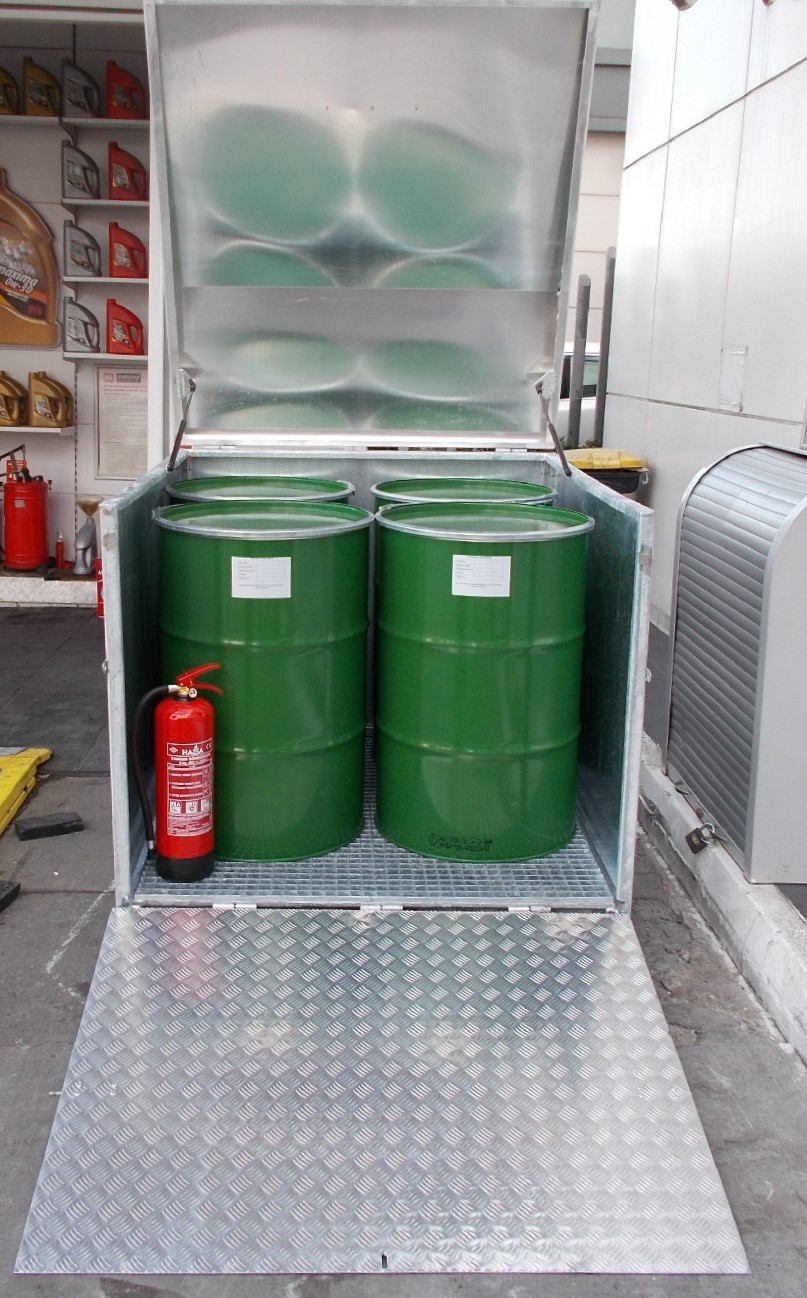17.10.2019 Istanbul
Secondary Containments
The main purpose of secondary containment containers, also known as spill ponds, is to trap a possible leak and/or spill that may  occur in all kinds of storage containers where hazardous chemical liquids are stored, as much as its volume, and to prevent the chemical from reaching the soil, drainage channel, surface and subsurface water, in short, to the receiving environments. At the same time, economic gain can be achieved by preventing product loss in case of a spill. These containers should be used for all containers of hazardous liquids, from large fuel tanks to small maintenance oil drums.
occur in all kinds of storage containers where hazardous chemical liquids are stored, as much as its volume, and to prevent the chemical from reaching the soil, drainage channel, surface and subsurface water, in short, to the receiving environments. At the same time, economic gain can be achieved by preventing product loss in case of a spill. These containers should be used for all containers of hazardous liquids, from large fuel tanks to small maintenance oil drums.
In the Regulation on Fire Protection of Buildings regarding the use of these containers in Turkish legislation, reference is made to the design criteria of pooling systems.
The main design criteria of these containers are detailed in the SPCC (Spill Prevention, Control and Measures to be Taken) document published by the EPA. The volume of the Secondary Containment is determined by calculating it with the annual rainfall data of the state in which it will be used.
According to the legislation of Turkey, the volume of pooling;
▪ For tanks of the same size, equal to the volume of one tank,
▪ As much as the volume of the largest tank for tanks of different sizes,
▪ For fuel tanks, equal to the total volume,
▪ For portable tanks, it must be 75% of the total volume of the tanks or at least equal to the volume of the largest tank.
Pooling volume according to EPA;
▪ The pooling used for a single tank is as much as the volume of the tank,
▪ In a tank yard with tanks of different volumes, the largest tank should be at least 110% of its volume. (This scenario does not take into account the storm (excessive rainfall) situation.)
